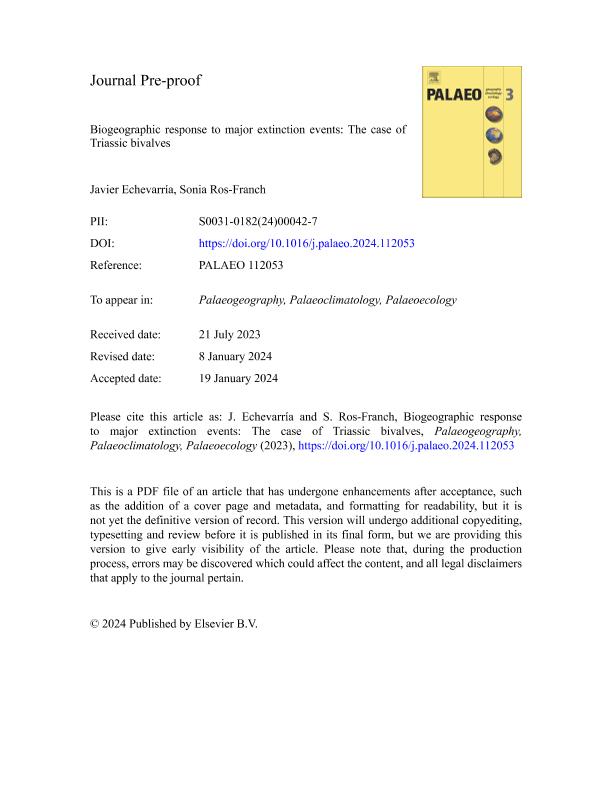Artículo
Biogeographic response to major extinction events: The case of Triassic bivalves
Fecha de publicación:
01/2024
Editorial:
Elsevier Science
Revista:
Palaeogeography, Palaeoclimatology, Palaeoecology
ISSN:
0031-0182
Idioma:
Inglés
Tipo de recurso:
Artículo publicado
Clasificación temática:
Resumen
Mass extinctions decimate the biota causing the disappearance of existing palaeobiogeographical patterns, which is not surprising given that palaeobiogeographical units are usually established on the basis of endemic taxa and these are the most affected in global crisis events. This paper deals with the evolution of the biogeographic pattern shown by bivalve genera in response to the end-Permian extinction event. From a network analysis (based on Simpson´s and Bray-Curtis´ similarity indices) and an Occurrence Ratio Profile, the Early Triassic is recognized as a time of general biogeographic homogeneity. The Middle Triassic shows a clear differentiation, with the evolution of many new genera, and an increase in endemicity, which reaches a maximum by the Carnian. During the Norian-Rhaetian the main biogeographic biochoremas appear well differentiated. Unlike other invertebrates, like brachiopods, bivalves show generally high similarity values between biogeographic units, and in this particular case study, Early Triassic biogeographic units appear more related to each other than to the corresponding Middle or Late Triassic units.
Palabras clave:
NETWORK ANALYSIS
,
PALAEOBIOGEOGRAPHY
,
END-PERMIAN EXTINCTION
,
RECOVERY
Archivos asociados
Licencia
Identificadores
Colecciones
Articulos(CCT - LA PLATA)
Articulos de CTRO.CIENTIFICO TECNOL.CONICET - LA PLATA
Articulos de CTRO.CIENTIFICO TECNOL.CONICET - LA PLATA
Citación
Echevarría, Javier; Ros Franch, Sonia; Biogeographic response to major extinction events: The case of Triassic bivalves; Elsevier Science; Palaeogeography, Palaeoclimatology, Palaeoecology; 638; 1-2024; 1-51
Compartir
Altmétricas




